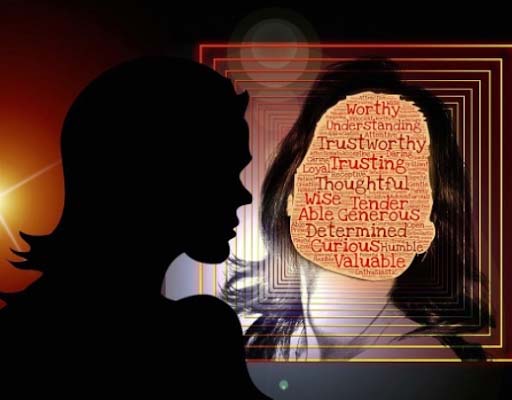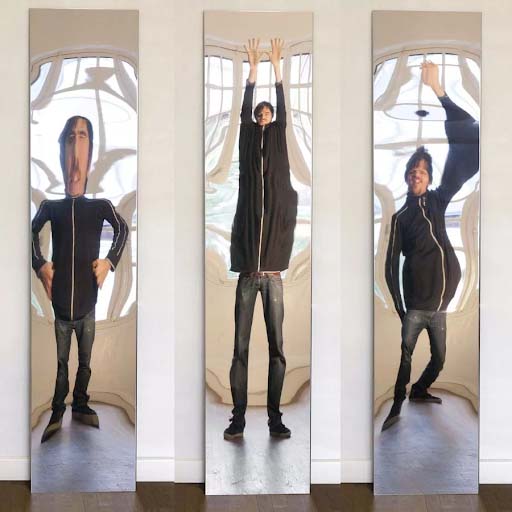What’s your secret to having a good hair day? Studies have shown women average nearly an hour a day in front of a mirror—mainly touching up their appearance. A different study says men look at themselves in a mirror more often than women. But here is the real scoop: Your hair has no bearing on your abilities or merits as a human being. Further, it will go much less noticed than your character traits. A mirror is an external tool for evaluating our superficial selves. In this blog, we will explore a critical internal means for self-examination.
The second Imperative after Emotional Self-Awareness (realizing one’s feelings) is Self-Assessment. Like gazing into a mirror, engaging in Self-Assessment allows for observation and reflection. This skill involves studying yourself in depth—how you reason and relate, how you are able to do tasks or succeed in your given field. Among several hundred managers from twelve different organizations, accurate Self-Assessment was the hallmark of superior performance (Boyatzis, 1982). This competence is found in virtually every “star performer” in a study of several hundred knowledge workers—computer scientists, auditors and the like—at companies such as AT&T and 3M (Kelley, 1998).
Definition and Insight
PAIRIN describes Self-Assessment as: Self-reflection so as to determine strengths and limitations in one’s values, abilities and resources.
People with high Self-Assessment aspire to understand and improve themselves. Balancing confident self-respect with humility, they embrace their strengths and admit shortcomings. Respectful of others who might have more experience or expertise, they can ask for and accept help. They seek out honest feedback, new perspectives and opportunities for growth and change. Constantly learning, these individuals are self-reflective. Without accurate Self-Assessment, people over or underestimate themselves. When abilities are undervalued, people’s potential remains untapped; when overestimated, people exaggerate their own influence, set unrealistic goals or insist on always appearing right. Self-Assessment finds its greatest meaning when it is brimming with kindness and accuracy.

Viewing Yourself Kindly
Crucial to Self-Assessment is examining the mindset with which you regard your big- picture self. Do you say, “I’m glad to see you!” to the person you see in the mirror, regardless of whether some of your personal attributes seem “flat, flimsy or flyaway” in places? Self-Assessment is meant to take place in a positive light with warm regard and self-acceptance, whether you are observing yourself or analyzing feedback that you’ve heard from others.
The word “assessment” might appear daunting because it is often associated with grades and judgments assigned by teachers and bosses. The goal of Self-Assessment is to evaluate so as to improve your mindsets and skillsets, not to judge your immeasurable worth as a person. Mirrors tell us what we look like, not who we are.
Seeing Your Uniqueness
Of the estimated 90 billion people who have lived, no one is just like you. Your DNA, intellect, fingerprints, dreams, aspirations—everything about how you were created—is extraordinary. Kind Self-Assessment involves the ability to observe yourself as a unique individual. This lens will enable you to keep the changeless value of “who you are” separate from “what you do.”
If you struggle to differentiate your identity from what you can or can’t do, seek out a trusted friend, mentor or counselor that can offer you a compassionate mirror. In many cases, this will be just the reframing you need to remove barriers to Self-Assessment, and to assist in the formation of Self-Alignment and Self-Confidence, two subsequent attributes in the PAIRIN Imperatives.
Viewing Yourself Accurately

Some people are fortunate enough to understand their strengths and weaknesses very clearly and accurately. Others, however, routinely overestimate themselves, thinking they have strengths that they don’t have, or underestimate themselves, thinking they are weak in something when they are not. Accurate and science-backed behavioral attribute surveys such as The PAIRIN Survey, and other types of valid skills and values assessments, are valuable tools for reliably informing the Self-Assessment process.
You are obviously a key source of information about your strengths and limitations. However, you may not be able to see all of them clearly or accurately. In a house of mirrors, reflections are distorted by curves in the glass to give people unusual and confusing images of themselves. If your self-reflections are skewed for some reason (e.g. past life events or relationships), a trusted person’s feedback can provide the lens you need to see your strengths and weaknesses more precisely. Insights from other people, especially the person to whom you report (your manager), the people who report to you (your staff) and others with whom you relate (colleagues or family) will help give you a better picture. You can a gather their viewpoints on your current skills, abilities and approach. Consider having several people fill out an assessment about you and combining their results. This will provide other angles on where your strengths and limitations may lie. Be open to feedback and know the comments are meant to help you see how you project yourself—either purposely or subconsciously. Analyze what you learn. Progress toward goals requires an understanding of where you are now and how far away your ideals are from the present. How do your strengths, as reported by others, align with your goals? Where do you have room for improvement? Requesting this kind of feedback will be seen as a positive initiative and set a good example. Applying this kind of feedback will allow you to improve—your ideals will become real.
3 Steps to Practicing Self-Assessment
Below is a Self-Assessment process as outlined by Dr. Tara Laughlin in the PAIRIN soft skills curriculum.
The first step in accurately assessing yourself is self-monitoring.
- Self Monitoring is the act of paying focused attention, measuring and recording what you do. Just by keeping an eye on things, you are more likely to improve than if you ignore it completely. What you monitor depends on what you want to accurately assess about yourself. What do you want to discover about yourself? Example: I want to know if I’m a good conversationalist. How often am I contributing when I’m in a group conversation?
The next step in accurately assessing yourself is to use the information you gathered while self-monitoring to evaluate yourself.
- Self-evaluation is achieved by comparing yourself to some pre-determined target. The target might be a rubric you’ve been given or an expectation set by yourself or someone else. You might choose to start with a lower, more reasonable target and then increase the expectations over time. In the example about someone monitoring how often they are speaking in a group, they might decide that a good goal is to speak up 10 times. That person can then compare themself to this target to determine if they are above, below or right on the target.
Once you reach a stage where you are fully aware of your strengths and areas for growth, you can move on to the third and final method of Self-Assessment which is ongoing reflection.
- Reflection is the act of giving serious, meaningful thought to personal experiences that have occurred. Through reflection, you will often notice things about an experience that you had not noticed in the moment. For example, you might reflect back on a conversation you had with a friend and realize you could have listened more attentively or you actually gave some bad advice. This is something you can either correct, by perhaps calling the friend and talking it out, or make a point to work on the next time. Without ongoing reflection, we are likely to miss opportunities for personal growth.
Get Started!
Would you like to begin using the mirror of Self-Assessment right away? Polish up this powerful tool and examine yourself in light of these questions:
- Who am I?
- What is the biggest desire of my heart?
- What do I love doing / feel most naturally myself doing?
- What is my greatest potential for growth?
- What is the one thing I could start doing or stop doing that would make the biggest difference to the quality of my life?
- How am I perceived by my friends, family, coworkers and enemies?
- How can I best be of service to others?
- What is draining or consuming me that I wish I could eliminate?
- Who are my inspiring role models?
- What do I want my legacy to be?
If you are looking for that person to come and change your life, take a look in the mirror. It starts within the person looking back at you. Be kind and get real!
